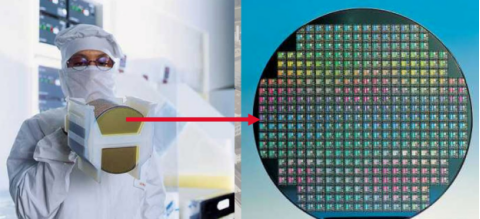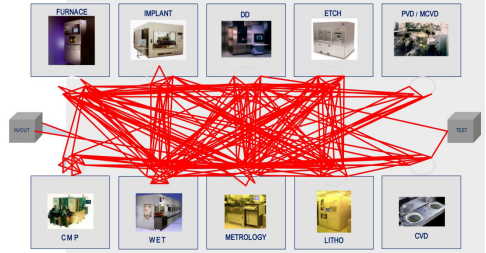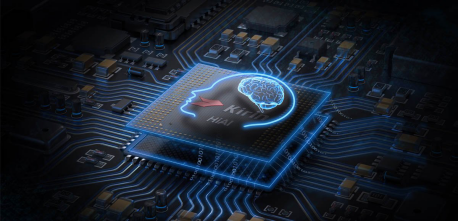Figure 1 Chips on the Wafer (Image from Infineon) Automotive, as an important national, large-scale industrial product, uses integrated circuit chips such as SOC (System on chip), which consists of multi-core CPUs and GPUs for digital instrument clusters, in-vehicle multimedia and navigation systems, and autonomous driving paths. Calculation, or application-specific integrated circuit (ASIC) chip, for signal processing, algorithm operation and control execution of electronic control modules, such as automatic parking, activated airbags, automated driving radar signal analysis, etc. New chips, and even smart chips that integrate AI (artificial intelligence) functions such as neuronal networks, deep learning, will soon find their way into cars. When the car's EE architecture changed from a CAN network to an Ethernet network in 2021, and dozens of electronic control modules were replaced by multiple large vehicle-mounted servers, the car was a mobile server or a supercomputer room. There is also a car production line, whether it is stamping, welding, painting, or assembly line, there are corresponding stamping machine tools, welding robots, spraying robots or robots, unmanned material delivery vehicles, sensors of the inspection station, production control Servers, RFID scanners, all these are inseparable from the chip. If you say "China Made 2025" vision, there is no chip, all this is a mirage. When I was shocked to hear that ZTE, one of China's high-tech benchmarking companies, was banned from supplying core chips by the United States, it made me sad. Share my experiences and ideas here for everyone: In the summer of 2004, I was at the Daimler Group Commercial Vehicle Technology Center in Germany responsible for vehicle planning and cost engineering. A colleague from the car department sent a conference invitation with the content: ST Microelectronics (Europe’s largest chip company) The Daimler Group will introduce ST Microelectronics' future main chip R&D direction and Product Roadmap. My colleagues and I have been very interested to listen to ST's introduction. Since then, I learned that Daimler Group has a department called “Critical Parts Management (CPM)†(core parts management). The chip, its direction of development, innovative products, especially the protection of the chip supply chain, and the world's major chip makers have such exchanges and form a good cooperative relationship. Gradually, I contacted major European and American chip manufacturers: Infineon, Freescale and Philips (NXP), Renesas, Microchip, Elmos, etc., visited many Fabs (chip factories), and learned about the main processes of chip design and manufacturing. Once at the International Electronics Fair in Munich, they met with their BMW counterparts and learned that they also had the CPM department. Although German mainstream car OEMs do not produce chips, they have already realized that the chips are the core components of automotive products and that the supply chain of chips is very important. After the Fukushima earthquake in Japan, how many system suppliers sent helicopters to air chips, only to prevent the main assembly line to stop production; how many chip traders, at this time, are too busy. Some OEMs even purchase a large number of core chips as a strategic reserve. Chips are strategic substances, just like oil. Chip manufacturing is a strategic industry and needs a strategic path. Figure 2 Schematic diagram of chip manufacturing equipment and process flow Chip and its manufacturing strategy 1. Strategic Planning The chip is a strategic material, and chip manufacturing is a strategic industry. Then, a strategic plan is needed for chip products and manufacturing. Planning requires a 10- to 15-year cycle, and every five years should have a strategic planning update and improvement process. Strategic planning requires a visionary blueprint for products, manufacturing equipment and processes: 1) product path; 2) manufacturing equipment and process path. In the 10 to 15 year cycle, we plan products, manufacturing equipment and processes at different time periods, and formulate relevant implementation projects and initiatives for these products, manufacturing equipment and processes. 2. Chip design Includes circuit design (Hardware Description Languages ​​(HDL)), circuit simulation, test, and verification. There are many skilled and experienced designers in China, and we hope that chip companies will promote engineers' innovation culture instead of CEO personal culture. The chip was designed and verified by engineers, not the CEO. We must respect engineers, advocate technology and innovation, give them high treatment and good social recognition. Do not infinitely enlarge the role of managers. Only in this way can there be good design and innovation in order to retain chip design talents. 3. Chip manufacturing equipment and processes Chip manufacturing equipment and processes are China's pain points. Two weeks ago, I met with an old schoolmate (Dr. MIT) and talked about the chip equipment industry. The old classmate was the CEO of a large chip manufacturing equipment company. When I asked him about China's chip equipment industry, he told me, "We are still far behind, many equipments need to be imported, and the chip manufacturing process is even more worrying." This reminds me of the automotive industry, how many devices, machine tools, and robots have to be imported. The manufacturing process is even worse, such as laser welding. When I asked the engineers of ME (manufacturing engineering), I answered Always said, "It will be early, it will be 7 years ago", but when I asked, "Why the body side and ceiling welding is still spot welding instead of laser welding," the answer is "Oh, this is not Yes, because the body is not accurate enough." However, this process has long been popular in the European and American automotive industry. The most common Santana in Germany is using lasers to weld side panels and ceilings! Chinese companies value design and disregard manufacturing processes. If I say, when I was at the German Daimler Group and my colleagues spent 3 years working on the development of a metal processing "Hard Turning" (including trying different tool geometry, tooling Layer, cutting parameters, SPC (Statistical Process Control, results verification), how many people have such patience and perseverance? The development of chip manufacturing processes requires a company with an engineer culture, not a single person (CEO) to save the company, and one cannot develop the chip manufacturing process. Many media are keen to report on the whereabouts of a certain chairman or CEO, all kinds of outlets, real estate, and quick money, everyone is very impulsive, but forget that high-tech and industrial development is the core of the national strategy. The results of the engineers, their patents for innovation, and their stories are the social respect they deserve. 4. Localization rate The chip industry needs to be large-scale and needs the market, not just a few samples. If the user of the chip still uses chips such as Intel, Qualcomm, Infineon, and Samsung, how will China's own chip companies survive? Here is a proposal to require companies that sell computers, mobile phones, and automobiles in China to force a certain percentage of Chinese chips on the main chip (the definition of a Chinese chip is that designed and manufactured in China), such as more than 45%. , As with joint venture auto companies, define core components and their localization rates. Currently, the localization rate of Chinese chips is below 15%, and they are all low-end and mid-range chips. Most high-end chips are imported. Figure 3 Huawei unicorn 970 SOC (System on chip) for Huawei Mate 9 smartphone (Image from Hisilicon official website) to sum up The chip manufacturing industry is a strategic industry and the chip is a strategic material. It is like oil and national security. It needs the government to look at it strategically and needs strategic reserves and strategic planning. Chip companies need an engineer culture to retain talents so that they can demonstrate creativity and have a very professional spirit. The media must take a positive direction and use this ZTE's hit-and-shoot incident to wake up and warn that China must independently research and develop and manufacture chips. Keeping your fate firmly in your own hands. Chinese chip companies need sustainable development. During this transition period, they need the strong support of the Chinese government (localization rate), because the chip is the key to achieving “Made in China 2025â€. Author Dr. Xiaoyi Liu (Founder of CostKey-Solutions.com), Daimler Group (Mercedes), 21 years of experience in automotive technology (Development of powertrain electronic control system series, vehicle planning, cost Senior Managers in Engineering, New Process Development, Transmission Production, etc.), led the development of Mercedes-Benz auto heavy-duty 16-speed automatic transmission series, new process components for powertrain components and Airbus large-scale structural parts, and electric vehicle commercial vehicles. A number of cost-reduction projects for cost planning, commercial vehicles and cars (PKO/OPTIMA, CTX, CORE). The Great Wall Automotive Technology Center is responsible for high-level technical management and has established the first full-scale cost engineering system, method and process for the Great Wall Motor Group in China, and has integrated it into the Group's entire product process. Electric Offroad Scooter,Powerful Electric Motorcycle,Wide Wheel E Scooter,Lithium Battery Hybrid Scooter NINGBO FENGLI IMPORT & EXPORT TRADING CO., LTD , https://www.ewaspmobility.com

